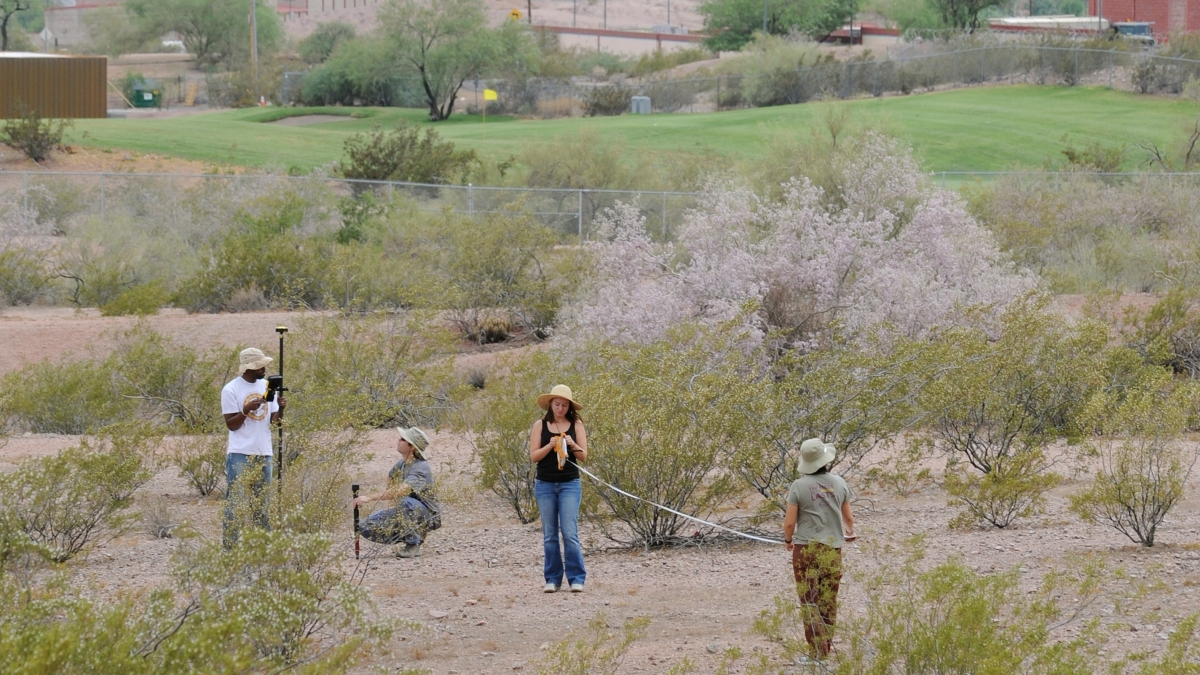ASU scientists help uncover complex causes, consequences of changes in the environment

Long-term ecological findings reported today in a special section of the journal BioScience show as temperatures increase in snowy ecosystems, more water is lost to the atmosphere than first predicted. Also, in drier ecosystems, such as deserts, less water is lost to evaporation than predicted. These conclusions are part of a study that included analysis of data collected over 30 years from 19 forested watersheds across the country. Cities, as well as agricultural areas, receive water from these study sites.
Arizona State University scientists are part of a team of researchers from across North America participating in collaborative ecological studies through the Long Term Ecological Research Network (LTER), which is funded by the National Science Foundation (NSF). Scientists are presenting their findings in articles included in BioScience’s retrospective look at the past 30 years of LTER and its research.
“Given the complex social and ecological dynamics involved with stream systems, long-term, cross-regional research such as this is critical for understanding the effects of climate variability on water flows,” said co-author Kelli Larson, an assistant professor at ASU’s Global Institute of Sustainability.
Larson and co-author Nancy Grimm, a professor in ASU’s School of Life Sciences, found that human interaction with an ecosystem complicates how we interpret environmental changes. In studying long-term data on 35 headwater basins, scientists discovered that both past and present human impact can mimic, worsen, improve, or even hide the effects of climate change on streamflow. For that reason, scientists believe that continuing long-term and collaborative environmental studies are critical to understanding climate change.
A collaboration of 24 scientists, including Larson and Grimm, presented these findings in “Ecosystem Processes and Human Influences Regulate Streamflow Response to Climate Change at Long-Term Ecological Research Sites,” one of six BioScience articles in the special section.
Another finding in a second article is that engaging in “scenario studies,” or studies that describe possible future conditions while incorporating relevant science, can help place scientists in a new relationship with society. Co-author Armin Wiek, assistant professor in ASU’s School of Sustainability, found that using scenario studies helps link science with decision-making in order to help create sustainable socioecological systems. The article “Scenario Studies as a Synthetic and Integrative Research activity for Long-Term Ecological Research” co-authored by eight scientists presents an argument to advance these types of LTER studies.
“ASU is home to one of 26 LTER programs. Ours is one of only two programs that focus explicitly on urban ecosystems,” said Dan Childers, director of the Central Arizona-Phoenix LTER Program and professor at the ASU School of Sustainability. “Because cities are human-dominated and human-designed ecosystems, our research has an interdisciplinary focus that includes all aspects of society, ecology and economy. This dedication to interdisciplinary collaboration has been central to the success of the CAP LTER Program,” he added. Grimm co-founded and helped administer ASU’s participation in this program from 1997 through 2010.
A conglomeration of 26 research sites that represent diverse ecosystems including deserts, Arctic tundra, lakes, estuaries, oceans, coral reefs, forests, urban areas and more, makes up the LTER network. It brings together more than 1,800 scientists and students from around the world who are conducting long-term investigations into ecological processes.
ASU has 63 scientists involved in the Central Arizona-Phoenix LTER program, as well as 46 graduate and undergraduate students. Students from three local high schools also participate.